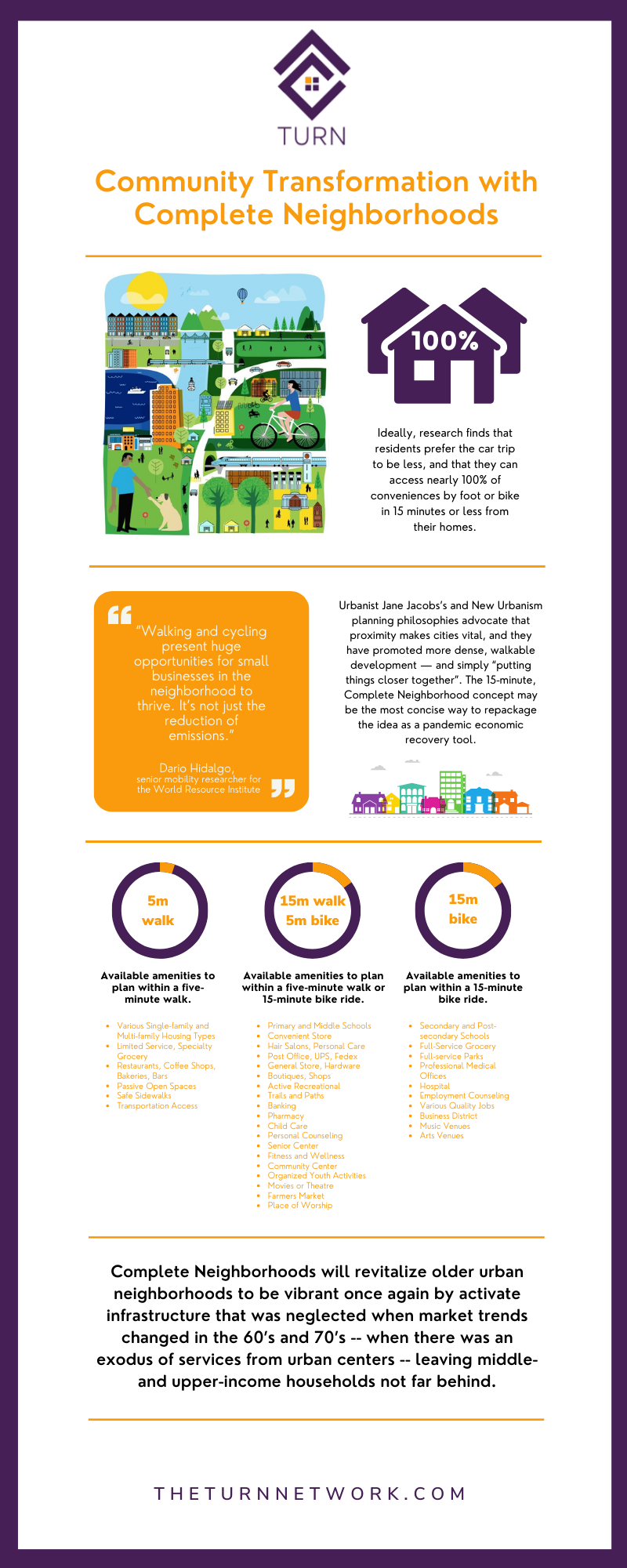The Complete Neighborhood
For almost two decades, trends have shown that most households prefer to live where they can live, work, shop, recreate, and find most of the services they require within a convenient distance – approximately 15 minutes away.
Ideally, we find that many residents prefer shorter car trips, and they can access these conveniences on foot or by bike in 15 minutes or less. Neighborhoods that immediately provide these everyday needed and desired amenities, we call Complete Neighborhoods.
This article is packed with resources to convince you that your city or town needs to get cracking with adopting Complete Neighborhoods throughout your community.
Cities like Paris and Amsterdam have committed to creating Complete Neighborhoods. In Paris, Mayor Anne Hidalgo has been an avid supporter since 2014, creating “people first” infrastructure in Paris’ neighborhoods that encourage walking, bicycling, and more convenient use of transit. Seattle has explored the 15-minute city in preparation for its next Comprehensive Plan. Detroit, Portland, Boulder, to name a few, are integrating this concept into their neighborhood planning.
Many of America's small cities’ older urban neighborhoods were developed with many of the elements of a Complete Neighborhood.
As market trends changed in the 60’s and 70’s, there was an exodus of services, with middle- and upper-income households not far behind. In most cases, the infrastructure that served these neighborhoods when they were vibrant remains.
In a post-pandemic environment, a return to more self-sufficient neighborhoods is an anticipated trend. Read the CityLab article.
Strong Towns reinforces this concept with the 7 Rules for Creating "15-Minute Neighborhoods" that highlight the following rules:
Bring back the neighborhood school
Make sure food and basic necessities are available locally
Third Places come in all shapes and sizes
House enough people, and all kinds of people
Density isn't enough
Sweat the small stuff for true walkability
Know when to get out of the way
Neighborhoods designed to capitalize on shifting consumer, work, and leisure trends will likely become more attractive to the marketplace, which is currently seeking a rare commodity in smaller communities. In addition, those residents who stayed committed to their neighborhoods will enjoy a renaissance of sorts and benefit from appreciated home and real estate values.
This redevelopment concept will serve as a lynchpin to the Neighborhood Opportunity Hub and Smart City concepts that are integral to designing the cities and neighborhoods for tomorrow.
The TURN Network is a project developed by Insight Strategic Concepts Inc.



